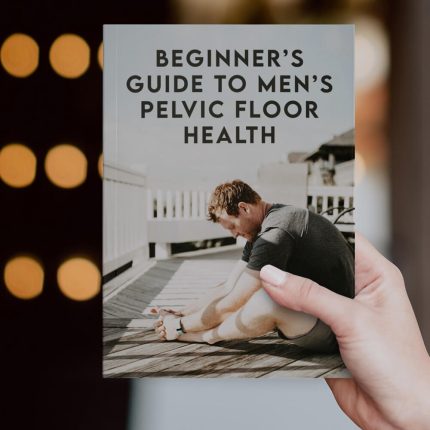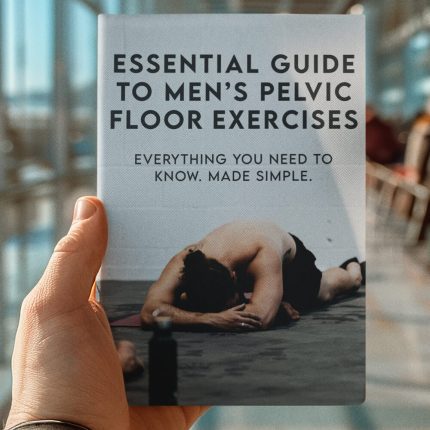
Pelvic Floor Therapy
Beyond the Bedroom: How Pelvic Floor Dysfunction Affects Male Sexual Health

When it comes to male sexual health, the conversation around the pelvic floor is finally getting its moment in the spotlight, beyond the bedroom, beyond the stereotypes, and squarely in the realm of holistic wellness. Dive into the gritty, real-life world of pelvic floor dysfunction in men, a topic that’s shaking up the way Gen-Z and millennials think about sexual performance, confidence, and long-term wellbeing. This isn’t your standard health lecture; we’re breaking down taboo, busting myths, and serving up science with a splash of humor. Buckle up for an engaging journey that uncovers how a little muscle down there might just be the secret weapon you never knew you needed.
Quick Links to Useful Sections
- Understanding Pelvic Floor Dysfunction in Men
- How Pelvic Floor Dysfunction Affects Male Sexual Health
- Common Causes and Early Warning Signs
- Pelvic Floor Exercises: The Basics & Beyond
- Pelvic Floor Therapy: What to Expect in a Professional Setting
- Modern Treatments and Cutting-Edge Techniques
- Mind-Body Connection: The Role of Mental Wellness in Pelvic Health
- Nutrition, Lifestyle, and Their Impact on Male Sexual Health
- Real-Life Success Stories: Case Studies in Male Pelvic Health
- Case Study 1: Reclaiming Intimacy and Confidence
- Case Study 2: Overcoming Chronic Pelvic Pain Through Lifestyle Changes
- Case Study 3: The Role of Digital Tools in Accelerating Recovery
- Expert Tips for Maintaining a Healthy Pelvic Floor
- Resources and Community Support: Your Next Steps
- Frequently Asked Questions About Male Pelvic Floor Dysfunction
- Your Journey to Empowered Pelvic Health
Understanding Pelvic Floor Dysfunction in Men
Pelvic floor dysfunction isn’t just a women’s issue, it’s an underrated concern for men too. The pelvic floor is a group of muscles, ligaments, and connective tissues that support essential organs like the bladder, bowel, and, importantly, the sexual organs. When these muscles become too tight, weak, or uncoordinated, it can lead to a myriad of problems, including chronic pelvic pain, urinary incontinence, and sexual dysfunction.
For many men, the pelvic floor is something that rarely gets a shout-out in conversations about fitness or sexual health. But here’s the kicker: these muscles play a crucial role in erectile function, ejaculation control, and orgasm intensity. Problems in this area can create a ripple effect in other aspects of life, affecting energy levels, mood, and even confidence in intimate situations.
Understanding what pelvic floor dysfunction looks like is the first step toward reclaiming your health. It could manifest as a vague discomfort in the lower abdomen, unexpected urinary leaks during a workout, or a lingering sense of tension that undermines your ability to relax. Recognizing these signs isn’t about panic, it’s about empowerment. With the right strategies, you can retrain your pelvic floor to work in harmony with the rest of your body.
How Pelvic Floor Dysfunction Affects Male Sexual Health
Let’s get real: your pelvic floor muscles are your unsung heroes when it comes to sexual performance. Whether you’re battling premature ejaculation, erectile difficulties, or a less-than-stellar libido, pelvic floor dysfunction might be the hidden culprit sabotaging your mojo. The pelvic floor supports the vascular and nerve supply to the penis, meaning that any imbalance or weakness here can directly impact your ability to achieve and sustain an erection.
Your pelvic floor affects how you move, how you use the bathroom, and how sex feels, yet most men are never taught how it works. This essential guide explains your pelvic floor in plain language and gives you a simple plan to relax, strengthen, and look after it at home.
Youll Learn How To:
- Understand what your pelvic floor does for bladder control, posture, and sex
- Spot signs of tension, weakness, and poor coordination
- Use breathing, reverse Kegels, and classic Kegels safely
- Improve habits for sitting, lifting, sport, sleep, and stress
Whats Inside: friendly explanations, safety guidelines, daily drills, sex function tools, flare up plans, and a complete twelve week program with trackers.
Perfect For: men of all ages who want less pelvic tension, fewer leaks, better comfort on the toilet, and more confidence in movement and in the bedroom.
Many men experience a cascade of issues stemming from pelvic floor dysfunction. For instance, chronic muscle tension can reduce blood flow, making erections harder to achieve. Meanwhile, an uncoordinated pelvic region can result in a lack of control during ejaculation, leading to premature climax or even painful orgasms. Not only does this affect your physical performance, but it also has a mental toll, undermining your self-esteem and creating a cycle of anxiety around intimate moments.
By acknowledging this connection, you open the door to targeted interventions. Pelvic floor exercises and focused therapy can retrain these muscles, decrease pain, and ultimately improve sexual performance. When your body works in sync, your confidence skyrockets, your energy levels surge, and every intimate encounter transforms from a session of stress to a celebration of well-being.
Common Causes and Early Warning Signs
Pelvic floor dysfunction in men can originate from various sources. It’s not always the result of aging, lifestyle factors, past injuries, and even high-stress jobs (hello, corporate burnout!) can contribute to the condition.
Chronic Stress: We all know stress isn’t just mental, it manifests physically. Prolonged stress can cause your muscles to tighten without you even realizing it. That persistent tension in your pelvic region? It might just be stress doing its sneaky work.
Poor Posture and Sedentary Lifestyles: Hours hunched over your laptop or couch surfing isn’t the best friend of your pelvic floor. Sitting for long periods can lead to muscle stiffness and weak pelvic support.
Injury or Surgery: Trauma from accidents or invasive pelvic surgeries can disrupt the natural balance of your pelvic muscles. Even minor injuries can leave behind lingering dysfunction if not properly rehabilitated.
Overtraining: Gym enthusiasts, this one’s for you. Excessive workout routines without proper recovery can lead to muscle imbalances, not just in your biceps, but also in your pelvic area.
Recognizing the early signs is crucial. If you're experiencing unexplained pelvic pain, lower back strain, frequent urinary leaks, or diminished sexual performance, it might be time to evaluate your pelvic floor health. Early intervention through targeted exercises and lifestyle adjustments can stave off the more dramatic consequences down the road.
Pelvic Floor Exercises: The Basics & Beyond
The good news? Your pelvic floor muscles are highly trainable, much like any other muscle group in your body. Whether you’re a seasoned gym-goer or a digital native juggling Zoom calls, integrating pelvic floor exercises into your daily routine can make a significant difference.
Kegel Exercises: Yes, Kegels aren’t just for women. For men, they help strengthen the muscles that control urination, enhance sexual function, and boost overall pelvic stability. To get started, identify the muscles you engage when stopping urine midstream. Once you’ve got this down, perform sets of contractions, holding each for about five seconds and then releasing. Gradually increase both the hold time and number of repetitions.
Your pelvic floor affects how you move, how you use the bathroom, and how sex feels, yet most men are never taught how it works. This essential guide explains your pelvic floor in plain language and gives you a simple plan to relax, strengthen, and look after it at home.
Youll Learn How To:
- Understand what your pelvic floor does for bladder control, posture, and sex
- Spot signs of tension, weakness, and poor coordination
- Use breathing, reverse Kegels, and classic Kegels safely
- Improve habits for sitting, lifting, sport, sleep, and stress
Whats Inside: friendly explanations, safety guidelines, daily drills, sex function tools, flare up plans, and a complete twelve week program with trackers.
Perfect For: men of all ages who want less pelvic tension, fewer leaks, better comfort on the toilet, and more confidence in movement and in the bedroom.
Reverse Kegels: Often overlooked, reverse Kegels focus on relaxing and lengthening the pelvic muscles. This exercise is great for counteracting the effects of chronic tension and can help break the cycle of tightness that contributes to dysfunction.
Mindful Breathing and Coordination: Pairing pelvic floor exercises with deep, diaphragmatic breathing can enhance muscle activation and ensure you’re using the right muscles. Think of it as a brain-body sync session, relax, breathe deeply, and give your pelvic floor the attention it deserves.
Advanced Routines: As you build strength, you may want to incorporate more integrated movements such as pilates or yoga sequences that target core stability. These exercises not only bolster the pelvic floor but also improve posture, reduce tension in surrounding muscle groups, and can contribute to a more fulfilling sexual experience.
Remember, consistency is key. Just like any other workout regimen, the benefits of pelvic floor exercises compound over time, so carve out a few minutes each day and make it non-negotiable. Your future self, both on and off the bedroom floor, will thank you.
EXPLORE OUR EXPERT MEN'S PELVIC FLOOR GUIDES WITH HIDDEN TIPS AND TRICKS
👨💻 Men's Pelvic Floor Book Store (Instant Download) 👨💻
Pelvic Floor Therapy: What to Expect in a Professional Setting
Sometimes, self-guided exercises aren’t enough, especially if you’re dealing with advanced dysfunction or chronic pain. That’s where pelvic floor therapy comes into play. A dedicated professional can conduct a comprehensive evaluation and tailor a treatment program that addresses your unique symptoms.
Most therapy sessions start with a detailed assessment. The therapist might use manual palpation or other diagnostic tools like biofeedback to pinpoint areas of tension and weakness. This isn’t about judgment, it’s about crafting the perfect roadmap for recovery.
Manual Therapy: Techniques such as myofascial release or trigger point therapy are often employed to relieve tension and promote better muscle coordination. These hands-on methods are designed to break down scar tissue, release knots, and improve overall muscle function in the pelvic region.
Customized Exercise Plans: Beyond the standard Kegels, professionals can introduce advanced routines tailored to your specific needs. They may suggest a sequence that combines resistance training with mobility exercises, giving you a holistic approach to rehabilitation.
Technology-Assisted Interventions: Tools like electrical stimulation and real-time biofeedback devices are becoming staples in pelvic floor clinics. These devices help you visualize muscle engagement and ensure that you’re performing exercises correctly, a digital high-five for precision and progress.
Even if you’re skeptical about therapy, think of it as a personalized fitness session for one of the most important, yet underappreciated, muscle groups in your body. Whether you’re looking to enhance your bedroom performance or simply boost your overall health, professional pelvic floor therapy can offer the guidance and support you need.
Your pelvic floor affects how you move, how you use the bathroom, and how sex feels, yet most men are never taught how it works. This essential guide explains your pelvic floor in plain language and gives you a simple plan to relax, strengthen, and look after it at home.
Youll Learn How To:
- Understand what your pelvic floor does for bladder control, posture, and sex
- Spot signs of tension, weakness, and poor coordination
- Use breathing, reverse Kegels, and classic Kegels safely
- Improve habits for sitting, lifting, sport, sleep, and stress
Whats Inside: friendly explanations, safety guidelines, daily drills, sex function tools, flare up plans, and a complete twelve week program with trackers.
Perfect For: men of all ages who want less pelvic tension, fewer leaks, better comfort on the toilet, and more confidence in movement and in the bedroom.
Modern Treatments and Cutting-Edge Techniques
In our fast-paced, tech-driven world, the treatment landscape for pelvic floor dysfunction is evolving at lightning speed. Beyond traditional physical therapy, there’s a suite of innovative treatments designed to provide faster, longer-lasting results.
Electrical Stimulation: This method involves using low-voltage electrical currents to activate and strengthen the pelvic floor muscles. It’s particularly useful for cases where muscle activation is difficult, acting as a bridge until you’re able to engage the muscles on your own.
Laser and Radiofrequency Therapies: Cutting-edge devices now allow for non-invasive treatments that promote tissue remodeling and collagen production. These therapies help tighten the pelvic region and improve blood flow, offering benefits that can extend well beyond sexual performance.
Virtual Reality (VR) and Mobile Apps: Digital innovation has made its way into pelvic floor therapy, with apps that guide you through exercises and VR platforms that provide immersive, gamified rehabilitation experiences. These tools make it easier, and even fun, to track your progress and stay motivated.
The beauty of these modern treatments is that they merge traditional physical therapy with the latest in technology and innovation. For the digitally-savvy Gen-Z and millennial crowd, this means a tailored, interactive approach that fits seamlessly into a busy, tech-forward lifestyle.
EXPLORE OUR EXPERT MEN'S PELVIC FLOOR GUIDES WITH HIDDEN TIPS AND TRICKS
👨💻 Men's Pelvic Floor Book Store (Instant Download) 👨💻
Mind-Body Connection: The Role of Mental Wellness in Pelvic Health
You might be thinking, “How does my mind even play into pelvic floor issues?” As it turns out, the connection is profound. Stress, anxiety, and even unresolved emotional traumas can lead to chronic tension in the pelvic muscles. When your body is on high alert, these muscles contract involuntarily. That tension can limit blood flow and interfere with the relaxation needed for optimal sexual performance.
Integrating mindfulness practices into your daily routine can be a game-changer. Mindful breathing exercises, meditation, and yoga aren’t just trendy buzzwords, they’re powerful tools that work hand-in-hand with physical therapies. By learning to manage stress levels, you indirectly help your pelvic floor relax and function more effectively.
Ever tried progressive muscle relaxation? This simple practice involves tightening and then slowly relaxing muscle groups throughout the body, including the pelvic region. It not only eases physical tension but also floods your system with a sense of calm, setting the stage for enhanced sexual performance and overall well-being.
By nurturing your mental state, you empower your pelvic floor to do its job with less hindrance and more fluidity. After all, a calm mind and a relaxed body make for a winning combination that boosts both self-confidence and sexual prowess.
Nutrition, Lifestyle, and Their Impact on Male Sexual Health
Your diet and daily habits have a significant influence on pelvic floor health and, by extension, sexual performance. Think of your body as an intricate machine, what you put in fuels every part of it, including those unsung pelvic muscles.
Anti-Inflammatory Foods: A nutrient-dense, anti-inflammatory diet can help reduce swelling in the pelvic region, promoting faster recovery and sustained muscle tone. Think colorful fruits, leafy greens, whole grains, and lean proteins. These foods not only support overall health but also directly benefit your pelvic tissues.
Hydration: Water is the elixir of life, for your pelvic floor muscles, hydration is key. When muscles are well-hydrated, they’re more flexible and less prone to injury. Keeping hydrated throughout the day can be a simple yet effective way to support pelvic health.
Physical Activity: Incorporating regular, moderate exercise into your schedule not only keeps your heart and lungs in great shape, but also reinforces muscle strength across the board. Activities like brisk walking, swimming, or yoga can serve as complementary exercises that boost both cardiovascular and pelvic health.
Sleep and Stress Management: Never underestimate the power of a good night’s sleep. Adequate rest ensures your body repairs itself, pelvic floor muscles included, and helps regulate stress levels. Developing a calming bedtime routine, free from the glow of your screen, can be the secret sauce in your pelvic health regimen.
Combining smart nutrition choices with a balanced lifestyle creates the optimal conditions for healing, resilience, and enhanced sexual performance. Every bite, every sip, and every moment of relaxation contributes to a stronger, healthier pelvic floor.
EXPLORE OUR EXPERT MEN'S PELVIC FLOOR GUIDES WITH HIDDEN TIPS AND TRICKS
👨💻 Men's Pelvic Floor Book Store (Instant Download) 👨💻
Real-Life Success Stories: Case Studies in Male Pelvic Health
Sometimes, the best way to understand the impact of holistic pelvic health strategies is to hear it straight from the source. Here are a few case studies that shine a light on real men who transformed their lives by addressing pelvic floor dysfunction head-on.
Case Study 1: Reclaiming Intimacy and Confidence
Mark, a 38-year-old tech consultant, had been grappling with erectile difficulties and premature ejaculation for years. Despite trying various treatments, nothing seemed to work, until he discovered a comprehensive pelvic floor program that combined conservative physical therapy with mindfulness practices and targeted exercises. By integrating Kegels and reverse Kegels into his daily routine and incorporating weekly yoga sessions focused on core strength, Mark not only regained control over his sexual performance but also experienced a boost in overall confidence. His story is a testament to how embracing a holistic approach can revive intimacy and restore self-assurance.
Case Study 2: Overcoming Chronic Pelvic Pain Through Lifestyle Changes
Alex, a 45-year-old creative professional, endured chronic pelvic pain and stress-induced muscle tension that not only affected his work but also wreaked havoc on his personal relationships. Taking charge of his health, Alex embarked on a journey that first involved a detailed pelvic floor assessment. He then adopted a structured exercise plan complemented by acupuncture and massage therapy. Once he realigned his diet and made sleep a priority, the improvements came fast. His pelvic pain reduced substantially, and he was finally able to enjoy an active social life without constant worry about his symptoms.
Case Study 3: The Role of Digital Tools in Accelerating Recovery
Raj, a 29-year-old freelance designer, represents the new generation that leverages technology for self-improvement. Faced with intermittent urinary leaks and a nagging sense of pelvic tension, Raj turned to a mobile app that not only guided him through personalized pelvic floor exercises but also provided real-time biofeedback. This digital approach, combined with online consultations with a pelvic floor specialist, helped Raj systematically improve his pelvic muscle control and overall sexual health. His experience underlines how modern technology can make complex therapies more accessible and engaging.
These case studies illustrate that with dedication, expert guidance, and a willingness to embrace modern as well as traditional methods, you can transform a seemingly minor inconvenience into a catalyst for life-changing improvements.
Expert Tips for Maintaining a Healthy Pelvic Floor
Keeping your pelvic floor in prime condition is a continuous process that blends exercise, lifestyle tweaks, and a healthy mindset. Here are some top tips from experts in the field:
- Regular Check-ins: Just as you schedule annual physicals, incorporate routine self-assessments or professional evaluations to track your pelvic floor progress.
- Mix It Up: Avoid plateaus by varying your exercise routine, rotate between Kegels, Pilates, yoga, and other core-strengthening activities.
- Mind Your Posture: Whether you’re glued to your desk or on your phone, maintaining proper posture can help alleviate undue pressure on your pelvic floor.
- Stay Hydrated and Eat Smart: Combine water-rich foods with an anti-inflammatory diet to support muscle health and reduce chronic tension.
- Incorporate Down Time: Regular relaxation and mindfulness practices can prevent the stress-induced tension that often compounds pelvic floor dysfunction.
- Use Technology: Leverage mobile apps and digital biofeedback devices that offer guided exercises and track progress over time.
- Consult Professionals: When in doubt, schedule a session with a pelvic floor specialist. Their insights and tailored programs will keep you on track.
By integrating these expert tips into your everyday routine, you not only strengthen your pelvic floor but also significantly boost your sexual confidence and overall quality of life.
EXPLORE OUR EXPERT MEN'S PELVIC FLOOR GUIDES WITH HIDDEN TIPS AND TRICKS
👨💻 Men's Pelvic Floor Book Store (Instant Download) 👨💻
Resources and Community Support: Your Next Steps
Embarking on a journey to improve your pelvic floor health is not a solo mission. Connecting with reliable resources and supportive communities can provide the motivation and information you need to succeed.
Educational Platforms and Blogs: Numerous websites and blogs, curated by health professionals, offer tutorials, success stories, and the latest research on male pelvic floor therapy. Sites dedicated to men’s health and sexual wellness can also serve as a treasure trove of information.
Online Support Groups: Social media communities and forums provide a space for sharing experiences, tips, and encouragement. Whether you’re looking to swap exercise routines or just need someone to understand what you’re going through, these groups can be invaluable.
Local Workshops and Therapy Sessions: Many cities now offer pelvic health workshops tailored specifically for men. Attending these in-person sessions not only gives you hands-on guidance but also helps you build connections with others who share similar challenges.
Digital Tools and Apps: As mentioned earlier, there’s a range of mobile apps and digital resources designed to guide you through personalized pelvic floor exercises. These tools often come with progress tracking, reminders, and even community features that allow you to connect with fellow users.
Professional Guidance: Don’t hesitate to consult with a pelvic floor specialist or a men’s health expert. Their insights can provide a tailored plan and help navigate the sometimes overwhelming world of pelvic health.
All of these resources are stepping stones on your journey to transforming your pelvic floor health and unlocking a new level of sexual confidence. Whether online or in-person, community support plays a critical role in sustaining long-term progress.
Frequently Asked Questions About Male Pelvic Floor Dysfunction
Below are some of the most commonly asked questions about pelvic floor dysfunction in men. If you’re on the fence about where to start or need clarification on any aspect of pelvic health, these FAQs are here to help.
1. What exactly is pelvic floor dysfunction in men?
Pelvic floor dysfunction occurs when the muscles in the pelvic region become too tight, weak, or uncoordinated, leading to issues such as urinary incontinence, chronic pelvic pain, and sexual dysfunction.
2. How does pelvic floor dysfunction affect sexual performance?
An unbalanced pelvic floor can limit blood flow and nerve function, which can contribute to erectile difficulties, premature ejaculation, and overall reduced sexual satisfaction.
3. Can pelvic floor exercises really help?
Absolutely. Regular exercises such as Kegels and reverse Kegels help strengthen and relax the pelvic floor muscles, improving both sexual performance and urinary control.
4. Are there side effects to performing pelvic floor exercises?
When done correctly, pelvic floor exercises are safe. However, overdoing them or performing them incorrectly can sometimes lead to increased tension or strain, which is why guidance from a specialist is beneficial.
5. How soon can I expect to see improvements in my sexual health?
Results vary by individual, but with consistent practice and, if needed, professional guidance, improvements can typically be seen within a few weeks to a couple of months.
6. Should I consult a doctor before starting pelvic floor exercises?
If you are experiencing significant symptoms or have any medical conditions, it’s wise to consult a health professional or pelvic floor specialist to tailor a safe and effective plan.
7. Can stress reduction affect my pelvic floor health?
Yes, stress can contribute to chronic muscle tension, including in the pelvic area. Incorporating mindfulness techniques and stress management practices can be highly beneficial.
8. Are mobile apps effective for guiding pelvic floor exercises?
Digital tools and mobile apps can offer useful guidance and tracking, especially if you’re new to pelvic floor exercises. They complement, but do not replace, personalized advice from a specialist.
Your Journey to Empowered Pelvic Health
Embracing the full spectrum of male pelvic floor health isn’t about quick fixes or band-aid solutions, it’s about a holistic approach that integrates exercise, therapy, modern technology, and lifestyle changes. This journey is one of empowerment, reclaiming your confidence both in and out of the bedroom. With every mindful breath, every well-executed exercise, and every moment of self-care, you are building a foundation that supports not just improved sexual performance but also overall well-being.
Whether you’re just beginning to explore the benefits of pelvic floor exercises, considering professional therapy, or diving deep into holistic healing through nutrition and mindfulness, remember that incremental steps add up. Your pelvis is at the core of your health, and investing in its strength and resilience will yield benefits that extend far beyond the physical.
The evolving landscape of male pelvic floor therapy continues to merge tradition with modern innovation, fusing evidence-based practices with digital breakthroughs and holistic insights. Every bit of progress, from reducing chronic pain to enhancing sexual performance, is a reminder that you hold the key to your own empowerment.
As you move forward, engage with communities, stay informed with the latest research, and don’t shy away from embracing change. Your journey to pelvic health is deeply personal yet universal in its impact. With knowledge, support, and a proactive mindset, you’re not just overcoming dysfunction, you’re redefining what it means to live a vibrant, sexually fulfilling, and empowered life.
Step into your power, trust the process, and celebrate every victory along the way. Here’s to a future where your pelvic health is an integral part of a life lived boldly and passionately.
Your pelvic floor affects how you move, how you use the bathroom, and how sex feels, yet most men are never taught how it works. This essential guide explains your pelvic floor in plain language and gives you a simple plan to relax, strengthen, and look after it at home.
Youll Learn How To:
- Understand what your pelvic floor does for bladder control, posture, and sex
- Spot signs of tension, weakness, and poor coordination
- Use breathing, reverse Kegels, and classic Kegels safely
- Improve habits for sitting, lifting, sport, sleep, and stress
Whats Inside: friendly explanations, safety guidelines, daily drills, sex function tools, flare up plans, and a complete twelve week program with trackers.
Perfect For: men of all ages who want less pelvic tension, fewer leaks, better comfort on the toilet, and more confidence in movement and in the bedroom.
Curious About Your Pelvic Floor? Explore our curated collection of insightful articles to learn more and take charge of your health.
- Pelvic Floor Basics
- Pelvic Floor Exercises & Workouts
- Pelvic Floor Kegel Exercises: Techniques & Benefits
- Advanced Pelvic Floor Workouts
- Pre/Post-Natal Pelvic Floor Routines
- Pelvic Floor Exercises for Men
- Pelvic Floor Therapy Techniques
- At-home vs Professional Pelvic Floor Therapy Options
- Diet & Lifestyle for a Healthy Pelvic Floor
- Pelvic Floor Health & Wellness
- Specialized Pelvic Floor Conditions & Treatments
Now back to the main article!

















